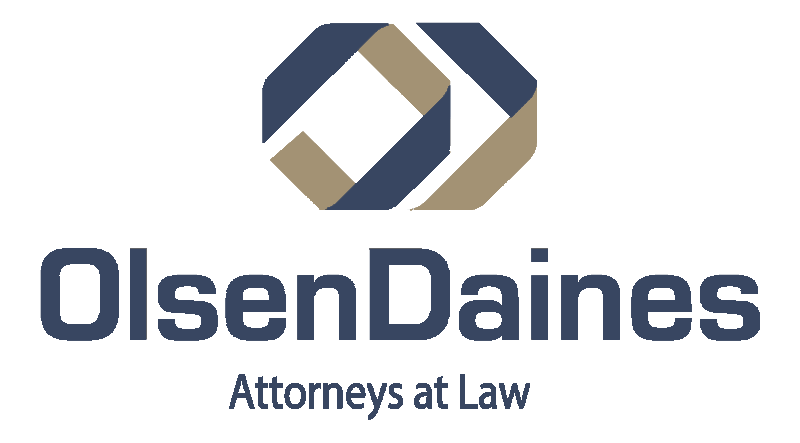
Are you burdened with a mountain of student debt that feels like it will never go away? Especially after the Supreme Court’s recent ruling on the student loan forgiveness plan, millions of Americans are wondering if they will ever find relief from these insurmountable loans.
If you’re in this situation, there’s still some hope. Many people are unaware that there are several different ways they can achieve student loan forgiveness, even after the Supreme Court’s ruling. In this blog post, the debt relief experts at OlsenDaines will explain what you need to know to get rid of your student loans and find financial freedom.
About the Supreme Court’s Ruling Against Student Loans
In late 2022, the Biden Administration announced its plan to discharge more than $400 billion in federal student loans across the country. Most borrowers would have been eligible for between $10,000 and $20,000 of immediate relief. However, a few states contested the plan and claimed it was unconstitutional, sparking a legal battle that would ultimately determine the outcome of Biden’s original plan.
The case was brought all the way up to the Supreme Court, which on June 30th reached a decision: that the President did not have the authority to automatically discharge these loans. Biden’s original student loan forgiveness plan would not be allowed to proceed.
Ways to Get Rid of Student Loans
Though the Supreme Court’s decision was disappointing for student loan borrowers across the country, that doesn’t mean it’s time to despair. Most people don’t realize that they may already qualify for these other methods of student loan forgiveness:
Filing for Bankruptcy
Historically, student loans have been considered non-dischargeable through bankruptcy. However, thanks to the Department of Education’s policy changes in late 2022, student loan discharge is more accessible through bankruptcy than ever before. The catch is that you have to demonstrate that the loans are inflicting undue hardship upon your financial situation.
Unfortunately, there is no strict definition of undue hardship – which is why it was so challenging to use bankruptcy for student loan discharge in the first place. However, the Department of Education has established a list of 14 guidelines that can help determine whether a borrower qualifies. Some examples of factors that can contribute to undue hardship include:
- If the borrower has a disability
- If the borrower made a good faith effort to repay the loans
- If the borrower’s income is below the poverty line for their state
While you don’t have to meet all the guidelines to qualify for full or partial discharge, meeting several of the criteria will increase your odds of a favorable outcome. It’s also worth noting that the process of proving undue hardship can be complex, and it’s important to have a skilled and experienced bankruptcy attorney on your side. An attorney can help you navigate the process and increase your chances of success.
Income-Driven Repayment Plans
Income-driven repayment plans (IDRs) use your family size and discretionary income to determine an appropriate monthly payment amount. For many people, the IDR can significantly lower monthly payment amounts. And, IDR plans offer complete loan cancellation after making a certain number of qualifying payments – typically over the course of 20 or 25 years. Some of the most common IDR plans include:
- Pay As You Earn (PAYE)
- Revised Pay As You Earn (REPAYE)
- Income-Based Repayment (IBR)
- Income-Contingent Repayment (ICR)
The main differences between these plans are the percentage of your discretionary income required in each monthly payment and the amount of time you must make payments before qualifying for forgiveness.
In addition to the four IDR plans above, the Biden Administration has also announced a new plan called the Saving on a Valuable Education (SAVE) plan. This plan has the lowest monthly payment of any available repayment option and offers a number of other benefits to make your debt more manageable. SAVE is rolling out in the summer of 2023 and goes into full effect beginning 2024.
Public Service Loan Forgiveness
To provide relief for full-time employees of government services or non-profit organizations, the federal government also offers Public Service Loan Forgiveness (PSLF). This allows the student loans to be forgiven after 120 qualifying payments, or just 10 years, while working for a qualifying public service organization. Some examples of qualifying employers include:
- Military service
- Public health
- Public education
- Social work
- Early childhood education
- 501(c)(3) tax-exempt organizations
It’s important to note that the 120 payments do not need to be consecutive, but you must fill out paperwork to delineate which payments contribute toward your forgiveness plan. Additionally, not all employers qualify for PSLF. To see if your employer qualifies you for this type of loan forgiveness, use the Department of Education’s search tool for employer eligibility.
How a Student Loan Lawyer Can Help You
Though there are several methods you can use to find relief from your student loans, the process is rarely easy. But, you don’t have to face it all on your own. At OlsenDaines, we strive to provide our clients with the information and resources they need to combat debt and find financial stability. Whether you need help determining which program is right for you or you need help navigating a bankruptcy case, our skilled lawyers have your back.
To schedule your free legal consultation, give us a call today!
How to Get Student Loan Forgiveness After the 2023 Supreme Court Ruling in Portland OR and Salem OR
And all surrounding areas
